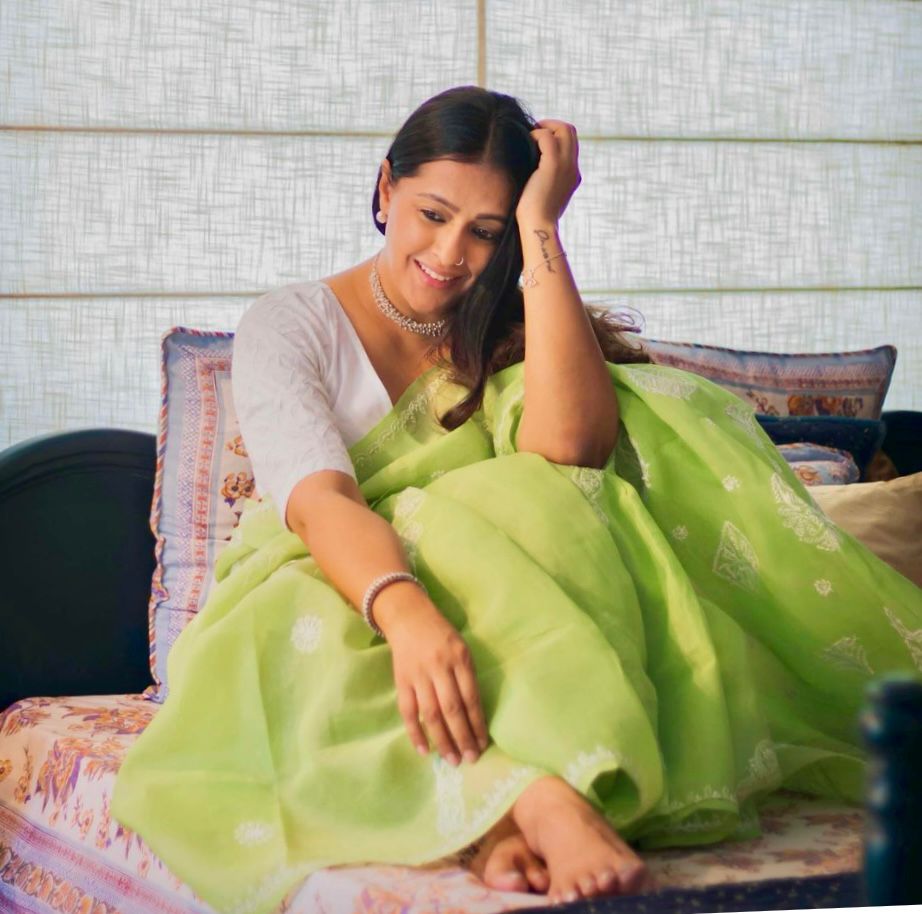
To all of us, Goa means beaches, fun, parties and vacations. Seldom it is noticed that it reflects a great history, architecture and rich heritage of art and craft.
The other side of Goa, that one often gives a miss, is one that reflects beautiful harbours, wide rivers, churches and rooted fisherman villages. These tribes and villages tell us stories of Goa's development. The rising of India's smallest state - Goa from the Portuguese rule to India's arms.
Those who know Me an iota, know how much I love Goa. This love for the place forced me to research about the handloom and Sarees belonging to this place. And hence, my eyes met these beautiful Kunbi weaves and the hard work of Dr R Phalgaonkar in this arena.
Not may know that Goa, under the Portuguese rule used to be a handloom hub. And once was famous for Kunbi weaves.
Traditional KUNBI Saree
A traditional saree, worn by the Goan Kunbi tribal women before the advent of the Portuguese in the 16th century. It was a cotton-chequered red-and-white saree with a sturdy weave.
Worn short above ankles with a knot over the shoulder, and worn without a blouse, it was well-suited for working on farmlands: Kunbi means people who sow seeds, farmers.
Kunbi is also a famous dance with the Kunbi women dancers dancing to the beats wearing brightly coloured Kunbi saris.
This Saree was originally worn by Kunbi and Gawda tribe women who were paddy field workers.
This community is closer to nature. This is the main reason the drape of this saree is simple; the length is just below the knee and gives freedom to the Kunbi workers to carry on with their daily chores.
Originally the Kunbi saree was dyed in red and black and woven in small and large checks. The dye was obtained from the recipe of iron ore, rice kanji (starch) and vinegar. All this abundantly found in Goa.
This saree was originally worn without the choli.
The traditional Kunbi women used to adorn herself with simple glass red and green bangles and with strands of black beads necklace.
So diluted and dead is the tradition, that Kunbi saris are mostly a copy of prints that are sold today.
It took close to eight years for Goa-based art historian, Dr Rohit R Phalgaonkar, to reach the Candolim residence of Kamat. Phalgaonkar, who has invested a good amount of his academic life in reviving the weave, today sends the designs procured from research to weavers in other states, hoping that the handloom — and the hands that weave such drapes — survive.
Kunbis reflected the block designs in each piece. Rust brown seems to be the traditional border, with a simple tiny white flower on the edges of the border.
Even the checks were of different styles and shapes. They have stories to tell about the weaves in the folk songs of these tribes too. Let not this Goan identity become just an anecdote for our upcoming generations.
With a lot of efforts from Goa Adiwasi parampara, the tradition is yet again coming to life.
The credit for the Kunbi's revival goes mainly to history professor Rohit Phalgaonkar, who is also a part of Goa government's Conservation Committee for Archaeology and Museums.
Together, they have been able to bring back to life a dying art and tradition of Goa and also to keep the employment for these tribes intact. What started as an interest in trying to rekindle a dying folk dance form also resulted in a fresh look at the tribal sari that the women wore for the dance.
Bring this art home!!


